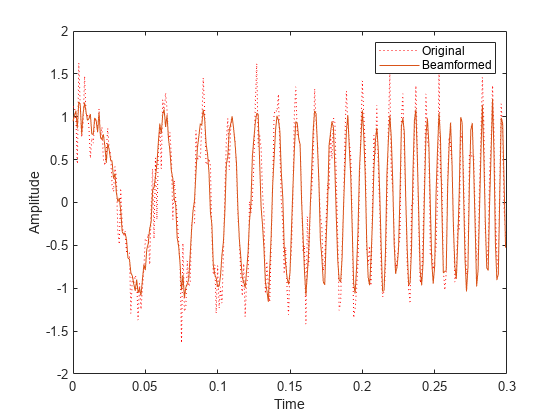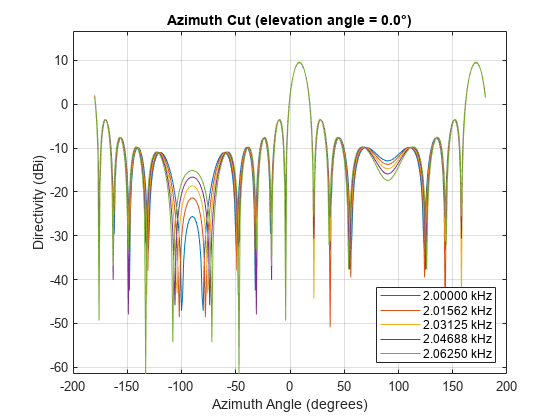step
System object: phased.SubbandPhaseShiftBeamformer
Namespace: phased
Beamforming using subband phase shifting
Syntax
Y = step(H,X)
Y = step(H,X,ANG)
[Y,W] =
step(___)
[Y,FREQ]
= step(___)
[Y,W,FREQ]
= step(___)
Description
Note
Starting in R2016b, instead of using the step method
to perform the operation defined by the System object™, you can
call the object with arguments, as if it were a function. For example, y
= step(obj,x) and y = obj(x) perform
equivalent operations.
Y = step(H,X)X,
and returns the beamformed output in Y.
Y = step(H,X,ANG)ANG as
the beamforming direction. This syntax is available when you set the DirectionSource property
to 'Input port'.
[ returns the beamforming weights, Y,W] =
step(___)W.
This syntax is available when you set the WeightsOutputPort property
to true.
[ returns the center frequencies
of subbands, Y,FREQ]
= step(___)FREQ. This syntax is available when
you set the SubbandsOutputPort property to true.
[ returns beamforming weights and
center frequencies of subbands. This syntax is available when you
set the Y,W,FREQ]
= step(___)WeightsOutputPort property to true and
set the SubbandsOutputPort property to true.
Note
The object performs an initialization the first time the object is executed. This
initialization locks nontunable properties
and input specifications, such as dimensions, complexity, and data type of the input data.
If you change a nontunable property or an input specification, the System object issues an error. To change nontunable properties or inputs, you must first
call the release method to unlock the object.
Input Arguments
| Beamformer object. |
| Input signal, specified as an M-by-N matrix. If the sensor array contains subarrays, N is the number of subarrays; otherwise, N is the number of elements. This argument can be specified as single or double precision. The size of the first dimension of the input matrix can vary to simulate a changing signal length. A size change can occur, for example, in the case of a pulse waveform with variable pulse repetition frequency. |
| Beamforming directions, specified as a two-row matrix. Each column has the form [AzimuthAngle; ElevationAngle], in degrees. Each azimuth angle must be between –180 and 180 degrees, and each elevation angle must be between –90 and 90 degrees. This argument can be specified as single or double precision. |
Output Arguments
| Beamformed output. |
| Beamforming weights. |
| Center frequencies of subbands. |
Examples
Algorithms
The subband phase shift beamformer separates the signal into several subbands and applies narrowband phase shift beamforming to the signal in each subband. The beamformed signals in all the subbands are regrouped to form the output signal.
For further details, see [1].
References
[1] Van Trees, H. Optimum Array Processing. New York: Wiley-Interscience, 2002.

